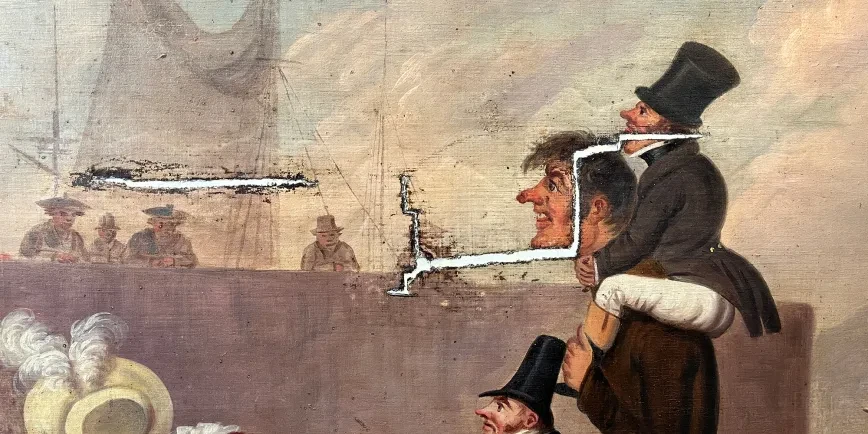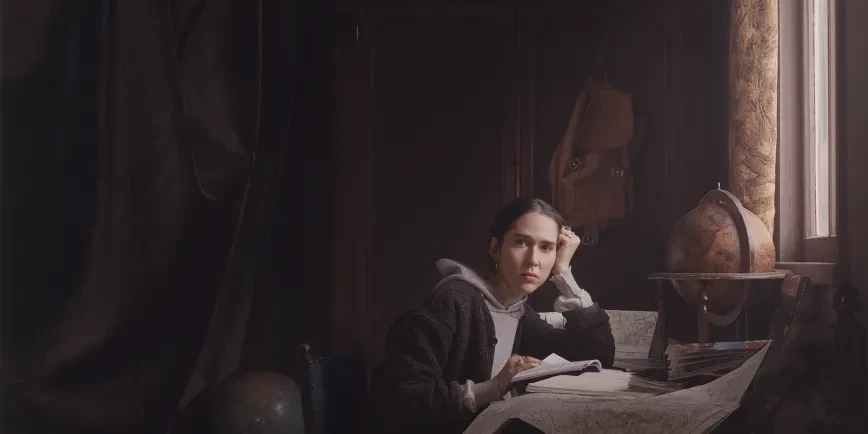
Close your eyes and picture Elizabeth I. What do you see?
Thick ginger hair? Pale skin? A rich dress covered in pearls?
There is a good chance that whatever image you have in your mind is at least partly inspired by the Armada Portrait.
The Armada Portrait of Elizabeth I is arguably the most recognisable depiction of the Tudor queen. However, while many people know the image, few people realise that there is not just one version of this iconic work.
There are, in fact, three surviving ‘Armada’ portraits of Elizabeth I: the painting on display at the Queen’s House in Greenwich; the version in the Woburn Abbey Collection; and a third, partly cut-down version at the National Portrait Gallery in London.
In 2020 these three portraits were displayed in public together for the very first time at the exhibition Faces of a Queen.
Seeing them together raised some intriguing questions. Why are there multiple versions of the same portrait? Is one the ‘original’ and the others copies? And did the same artist paint all three?
Why are there three versions of the Armada Portrait?
All three versions of the painting commemorate the most famous battle of Elizabeth I’s reign: the defeat of the Spanish Armada in 1588. The portrait shows Elizabeth in triumph, with the storm-lashed Spanish fleet behind her on the right and the English ships sailing through calm seas on the left.
People are often surprised to discover that there are three versions of the same painting. However, given the opportunity the English 'victory' offered to demonstrate Elizabeth's growing ambition on the world stage, it is not surprising that multiple versions were commissioned.
Portraits of Elizabeth were often commissioned as official gifts for foreign monarchs and favoured courtiers, while other members of court would acquire versions to show their devotion to her. If Elizabeth hoped to commemorate the defeat of the Spanish superpower, why stop at just one painting?
Which one is the ‘original’?
It is difficult to talk about these paintings in terms of ‘originals’ and ‘copies’ given the nature of Tudor royal portraits.
Elizabeth participated in very few portrait sittings. Therefore, once a depiction or 'pattern' had been approved, multiple paintings would be made in order to satisfy demand for images of the Queen. The Armada Portrait is just one example of this.
All three surviving versions of the Armada Portrait are believed to have been painted around the same time, shortly after the defeat of the Spanish Armada.
Who painted the Armada Portrait?
There is no confirmed artist for any of the surviving Armada portraits, although a number of possibilities have been suggested.
Two names have at various times been connected with the portraits: George Gower and Nicholas Hilliard, two of the most important English artists of the period. However, this attribution has never been verified.
George Gower was one of the leading portrait painters of the age, and ‘Serjeant Painter’ to Queen Elizabeth from 1581.
Nicholas Hilliard meanwhile was the queen’s ‘limner’ (miniature portrait painter) from around 1573, responsible for some of the most famous images of Elizabeth I, including the 'Phoenix' portrait.
Research suggests that the three paintings may have been produced by different workshops associated with unknown English artists, modelled on an approved miniature image of Elizabeth's face by Hilliard.
Hilliard had also produced a full-length portrait as part of designs for a new ‘Great Seal’ in 1584. This pen and ink drawing, showing a woman in a dress resembling the one Elizabeth wears in the Armada Portrait, could be the basis for the Armada Portrait.
Spot the difference
Look at the three portraits together. What do you see? What are the key differences between them?



Spot the difference
Look at the three portraits together. What do you see? What are the key differences between them?
Did you notice…
- One is vertical, the others horizontal: the version held by the National Portrait Gallery has at some point in its life been ‘cut’ down on both sides and possibly the lower edge. The other two versions are in landscape format, with two distinct seascapes clearly visible in the background.
- The seascapes: even in the two ‘landscape’ versions, there are differences in what is shown behind the Queen. The Woburn Abbey version is believed to show the seascapes as they were originally painted in the 16th century. The Greenwich version meanwhile is different: modern paint analysis suggests that the scenes were painted over in the early 18th century, with the original designs hidden underneath.
- The colours: The Greenwich version underwent complex conservation work after it was saved for the nation in 2016. Several layers of old varnish were removed, revealing the vibrant colours beneath.
Who owned the Armada portraits?
The paintings were probably originally commissioned by courtiers keen to show allegiance to the Queen.
The Armada Portrait at Greenwich was owned by the descendants of Richard Drake. Richard Drake was the business manager and prize agent to his good friend, Sir Francis Drake, the English sea captain and pirate who fought against the Spanish Armada.
Documents relating to the painting at Woburn Abbey go back to 1782, although it could have been in the collection for longer. The National Portrait Gallery's version was once owned by Scottish antiquarian David Steuart Erskine, the 11th Earl of Buchan. He presented it to the British Museum in 1765, and it was transferred to the National Portrait Gallery in 1879.
Discover the artists, ideas and creativity connected with Greenwich’s galleries and museums.












